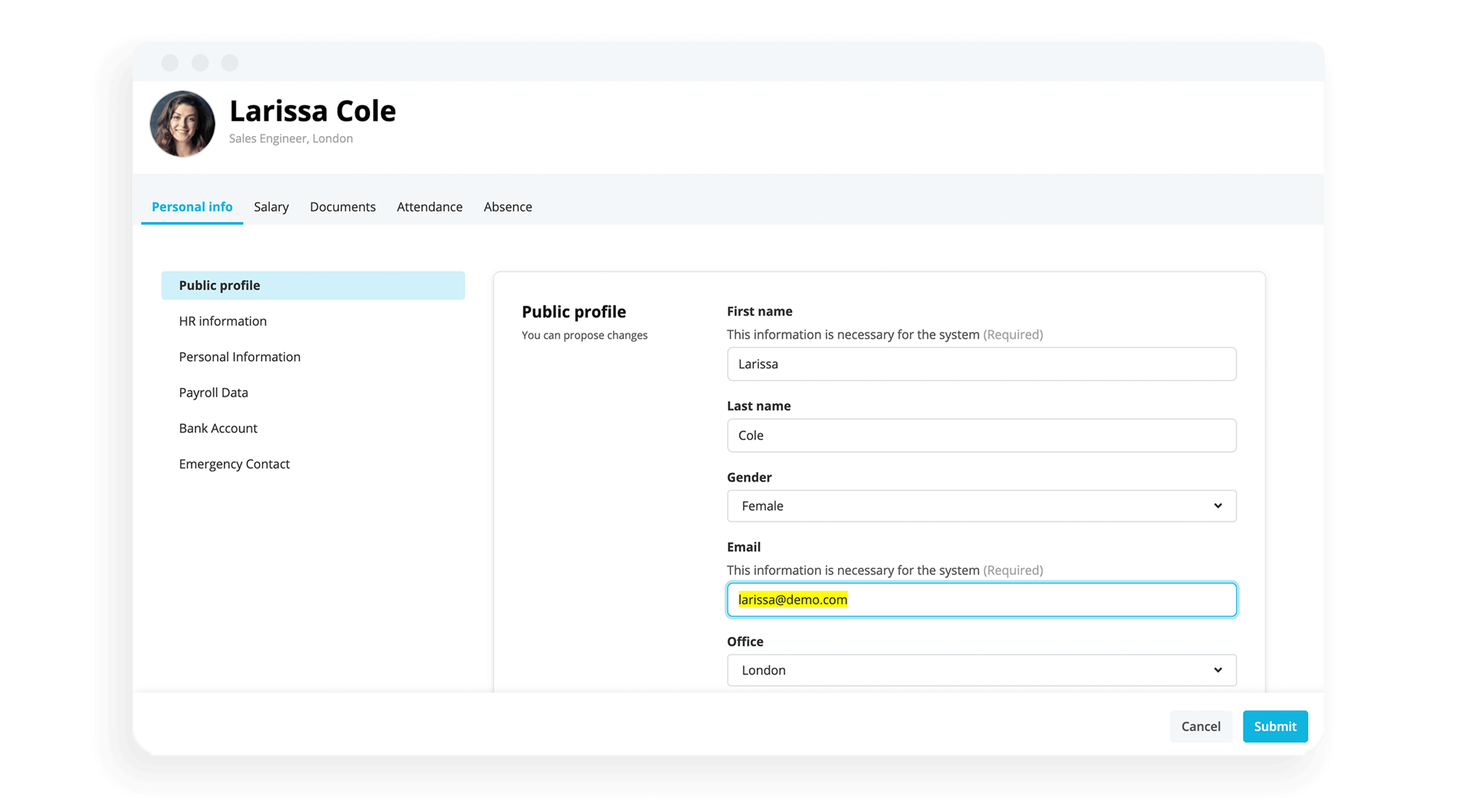
Download our free guide
Everything you could possibly need to know about corporate culture.
Download it todayHolacracy: The Key to Succeeding Without Hierarchy?

A hierarchical structure is a standard for the majority of companies, and it’s proven effective for quite some time. But as workplace trends evolve, the drawbacks of a hierarchical structure become more apparent.
An organisational alternative is holacracy, which puts more emphasis on an employee’s contributions in smaller groups in an office environment. An overview of this emerging structural model is provided below to help you decide if it’s right for your company.
Key Facts
Holacracy minimises or removes higher leadership roles from a company, giving employees more control over their work.
The holacracy model breaks down typical job positions into smaller roles and responsibilities designed so that any worker can undertake them.
Implementing this structure requires a gradual transition for employees to have time to acclimatise.
What Is Holacracy? Definition
The holacracy model is an alternative to the typical hierarchical model that empowers team self-sufficiency. Standard operating procedures often resemble a pyramid structure, with groups given tasks passed down through a chain of command. Holacracy shifts that arrangement into a series of nested circles where teams are given greater freedoms in pursuing company goals.
Where Does Holacracy Come From?
The term ‘holacracy’ was coined in the 1967 book “The Ghost in the Machine” by Arthur Koestler. The book defines it as the organisational connections between holons, or units, that wouldn’t exist without the business but operate independently within it. In the early 2000s, Brian Robertson, author of the “Holacracy Constitution”, further developed the concept, devising how it could work within an organisational context.
How a Holacracy Works
A holacracy encourages the creation of roles rather than job descriptions. That means that typical job titles are broken down into their smallest individual responsibilities, allowing one person to take on multiple ‘roles’ at once.
When distilled to such minute detail, searching for people to fill empty roles becomes easier and less expensive. It enables you to search internally for someone with the single required skill rather than seek out and train a new hire who fits many roles simultaneously.
After seeking out the best people who can fulfil all the necessary functions, each team is given a goal to accomplish. The circle group structure of holacracy means every team is self-organised and independent, which allows them to work towards their goal in whichever way they want.
Additionally, governance occurs independently within each circle, so no two groups will follow the same rules (beyond those set by the company).
Holacracy: Example
One of the most notable examples of a company using a holacratic organisational structure is the Valve Corporation, one of the world’s most renowned video game companies. They’re a ‘flat company’ where no one reports to anyone, and everyone can work on what they want. At Valve, the circles typical of holacracy are called cabals, and people are allowed to leave or join cabals depending on what they find interesting or important.
The 4 Pillars of a Holacracy in Companies
Successfully implementing a holacratic structure into your organisation means paying particular attention to its four key aspects. Centring your efforts around the pillars below helps ensure you get the most out of this alternative business model.
1. Double Linking | Double linking helps build a solid communication channel by creating a delegate role for each circle that represents their needs. Often, each delegate is a member of both circles and helps maintain an efficient flow of information. |
2. Clear Distribution of Roles | With more precise descriptions, it’s easier for team members to keep track of tasks, helping them understand their importance to the team and avoiding overlap. |
3. Division of Operational and Control Meetings | The standard holacracy model describes meetings built around specific procedures: The tactical or operational meeting and the governance or control meeting. The tactical meeting identifies and devises plans to remove roadblocks that hamper the team’s ability to work, while the governance meeting is where roles are created, changed or assigned. |
4. Dynamic Decision-Making | The self-contained nature of a holacracy circle gives the team the freedom to work toward company goals how they see fit. This independent corporate culture makes consensus opinion easier to gather, leading to groups developing tighter processes that enable them to react faster to changes or obstacles. |
Empowering Your Employees With HR Software

Employee self-service with Personio means empowering your workforce to keep their data up to date, on their own terms. All HR has to do is approve changes for a clean database of employee data, at all times. Click below to learn more.
Self Service With PersonioThe Roles in a Holacracy
The holacracy structure encourages breaking down larger job positions into smaller roles that anyone within the organisation could potentially fill. However, the model advocates for four core roles to be present in every circle to ensure they work as seamlessly as possible.
Lead Link. The person is accountable for assigning roles created in governance meetings and for allocating resources.
Rep Link. This elected position is used to advocate for the needs of smaller circles within a larger group to facilitate the flow of information.
Facilitator. This is the person responsible for setting up and conducting the group’s governance and tactical meetings.
Secretary. The employee within this role creates records of the group’s meetings and organises them for future reference.
Advantages and Disadvantages of the Holacracy Model
Here’s what to consider before committing to a holacracy model at your organisation:
Advantages | Challenges |
Promotes Creativity. Job descriptions limit employees to certain responsibilities without much opportunity to deviate from them. Holacracy’s smaller roles allow employees to accept duties they believe they can accomplish, encouraging invention and creative problem-solving. | Depends on Self-Management. The holacracy model provides a level of self-governance that many employees aren’t used to. While some workers can readily use the situation to develop creative solutions, it’ll hamper people who rely on guidance. |
Enables Greater Transparency. Without traditional leaders, it’s easier for each circle to control the information flow without crossing red tape barriers. | Can Lead to Lots of Meetings. Governance and tactical meetings help limit the number of gatherings a circle needs, but employees aren’t limited to one group. If every team has their own meetings, they can quickly crowd your workforce’s schedules. |
Increases Employee Engagement. Holacracy circles promote including the team in the decision-making process. Employees often feel more engaged when their input is considered for how the group tackles their work. | Lack of Accountability. Employees have a heightened ability to move between roles, but that mobility can make it difficult to track your workers’ performance and hold them accountable for poor results. |
Frequently Asked Questions About Holacracy
What Is an Example of Holacracy?
The Valve Corporation lets its workers form ‘pods or cabals’ and work on things that interest them without managerial input.
Who Is the Founder of Holacracy?
Arthur Koestler coined the term, while Brian Robertson expanded on the concept.
Why Do Companies Use Holacracy?
Companies use holacracy to empower their employees to accomplish company goals that suit their workflow.
What Is the Golden Rule of Holacracy?
Employees assigned to a role are authorised to enact any action they believe is necessary to reach their goals as long as it doesn’t break company rules.
Is Holacracy Effective?
The Holacracy model can be effective, but that often depends on the specific needs and circumstances of the company.
Find Success With Holacracy
A working model that removes supervisors from the equation goes against the grain to the point where many will assume it can’t work in a business setting.
However, many companies are utilising holacracy structures and getting results. While it won’t work for every organisation, maybe a flatter structure could be right for yours.
Disclaimer
We would like to inform you that the contents of our website (including any legal contributions) are for non-binding informational purposes only and does not in any way constitute legal advice. The content of this information cannot and is not intended to replace individual and binding legal advice from e.g. a lawyer that addresses your specific situation. In this respect, all information provided is without guarantee of correctness, completeness and up-to-dateness.
